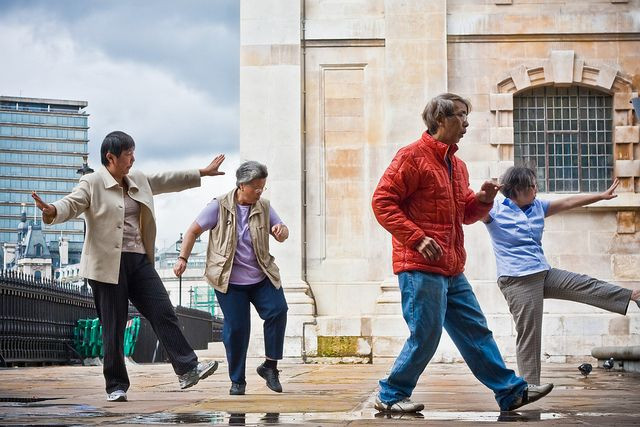Tai Chi Eases Parkinson's Disease Symptoms

Tai chi, an ancient Chinese martial art characterized by slow, gliding poses and meditation may improve balance and movement control for people affected with Parkinson’s disease.
Previous studies have also revealed that tai chi reduces falls and depression among the elderly and lessens pain for people with arthritis and fibromyalgia.
Parkinson's disease is a common brain disorder among the elderly. Symptoms of the disease include tremors and stiff, jerky movements that impair movement especially in the ability to maintain balance. The disease generally worsens with time, and patients will gradually lose stability and have trouble walking, have difficulty with activities associated with daily living and experience frequent falls.
There is no known cure for Parkinson’s disease, but treatment like surgery or medicine can help control symptoms and doctors often recommend exercise and physical therapy.
In the latest study, researchers reported that Parkinson’s patients enrolled in twice-a-week tai chi training sessions had improved balance and walking abilities and had less falls compared to other groups of patients who were either enrolled in resistance or stretching training.
"These results are clinically significant because they suggest that Tai Chi, a low-to-moderate impact exercise, may be used, as an add-on to current physical therapies, to address some of the key clinical problems in Parkinson's disease, such as postural and gait instability,” Dr. Fuzhong Li of the Oregon Research Institute said in a statement released on Wednesday.
“Since many training features in the program are functionally oriented, the improvements in the balance and gait measures that we demonstrated highlight the potential of Tai Chi-based movements in rehabilitating patients with these types of problems and, consequently, easing cardinal symptoms of Parkinson's disease and improving mobility, flexibility, balance, and range of motion," Li explained.
Patients in the tai chi group had improvement in steadiness that was 2.5 times greater than those who enrolled in resistance training and 4 times greater than those who only did stretching exercises, according to researchers.
The tai chi program consisted of six martial art movements that were integrated into an eight-form routine that focused on weight-shifting, controlled displacement of the center of gravity over the base of support, ankle sway and front-to-back and sideways stepping.
"There are a number of practical advantages to using Tai Chi to improve motor dysfunction of Parkinson's disease - it is a low cost activity that does not require equipment, it can be done anywhere, at any time, and the movements can be easily learned. It can also be incorporated into a rehabilitation setting as part of existing treatment. Similarly, because of its simplicity, certain aspects of this Tai Chi program can also be prescribed to patients as a self-care/home activity," Li added.
The findings were published in the February 9, 2012 issue of the New England Journal of Medicine.
Published by Medicaldaily.com



























